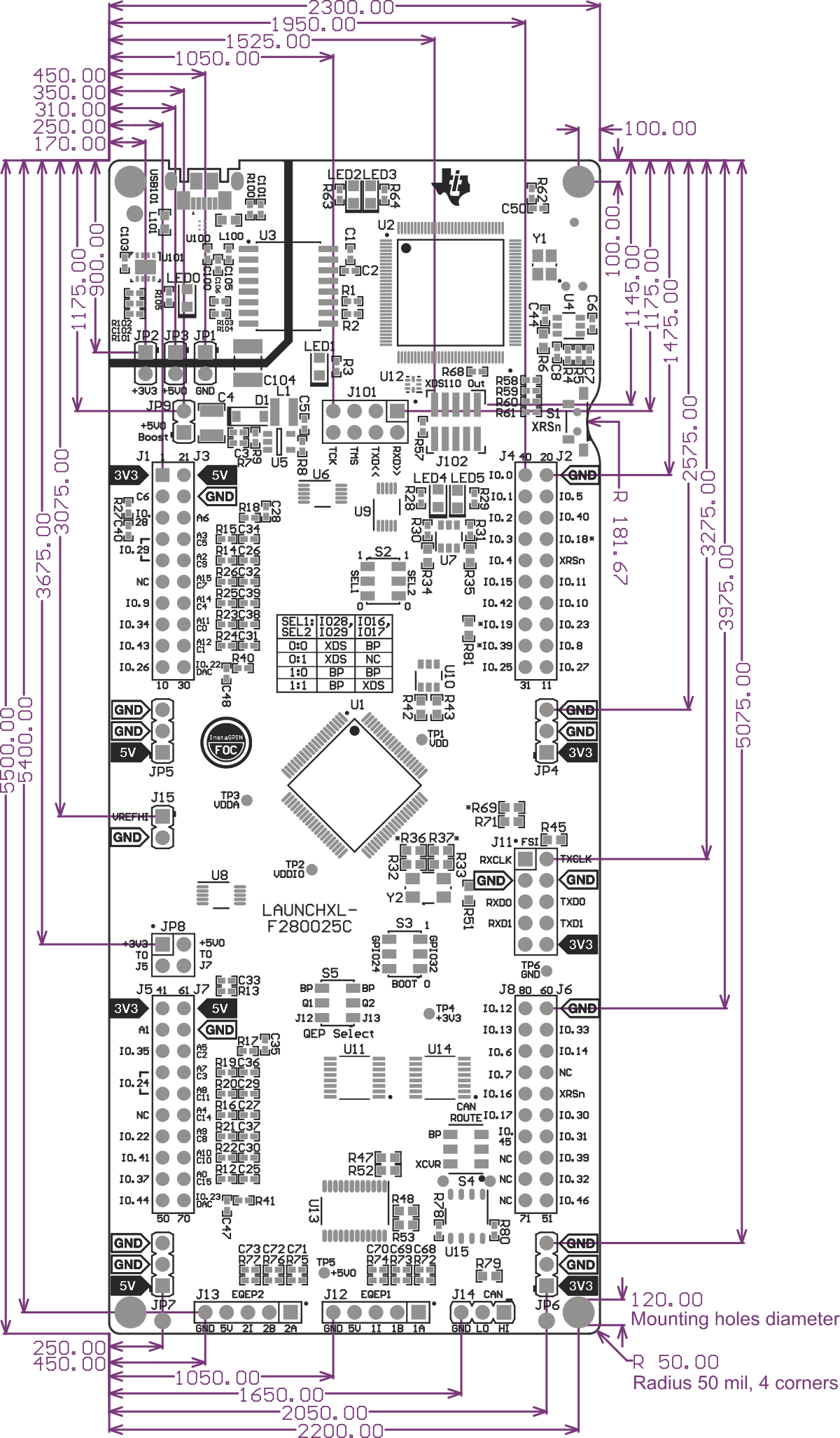SPRUIW8 November 2020
- Trademarks
- 1Board Overview
- 2Software Development
- 3Hardware Description
- 4Board Design
- 5Frequently Asked Questions
- 6References
4.4 LAUNCHXL-F280025C Board Dimensions
Figure 4-10 is a dimensional drawing of the F28002x LaunchPad that shows the location of selected features of the board as well as the component locations.
 Figure 4-10 F28002x LaunchPad Dimensions and Component Locations
Figure 4-10 F28002x LaunchPad Dimensions and Component Locations